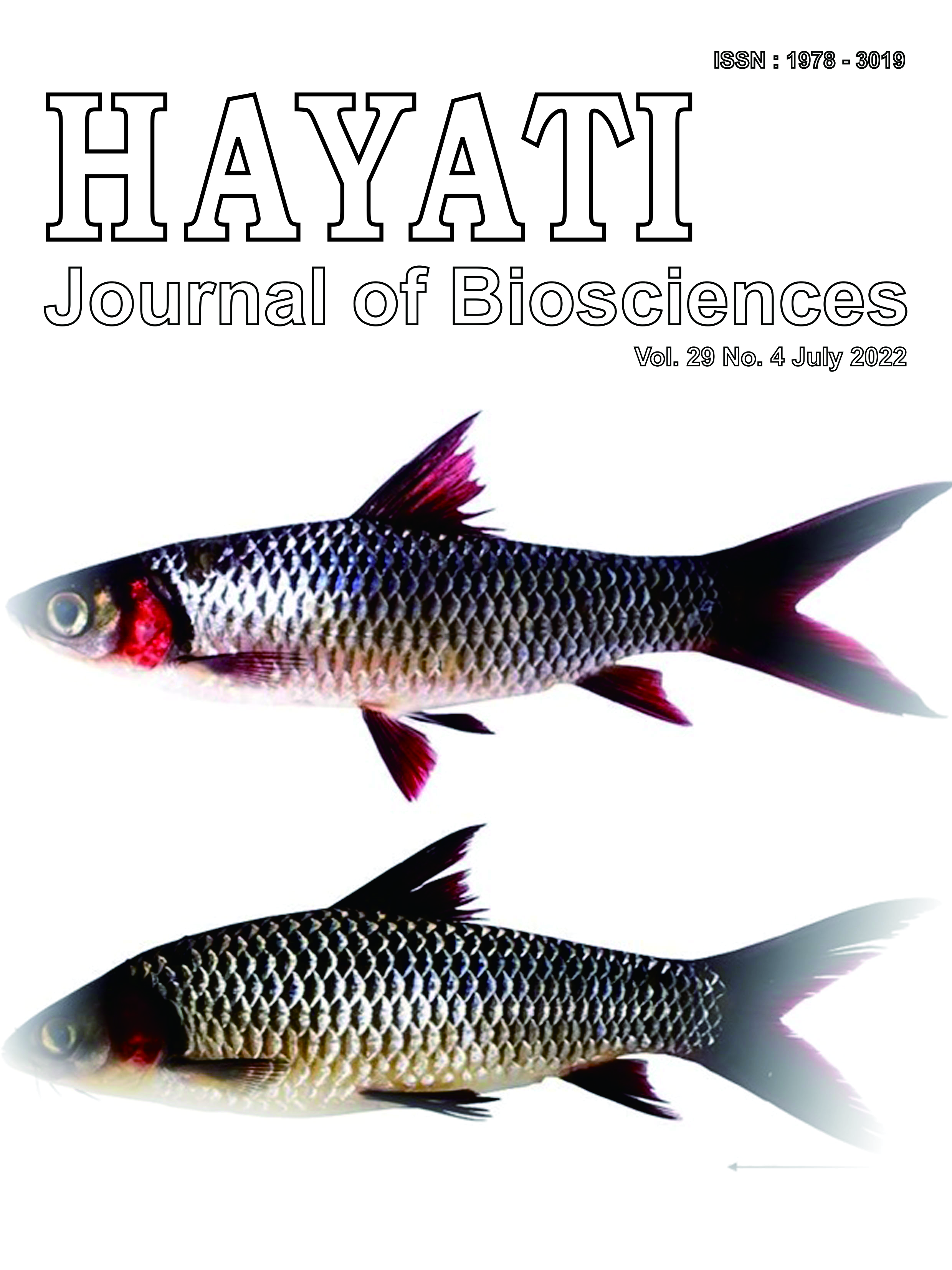Morphology and Anatomy of Endemic Fish Leptobarbus melanopterus (Cyprinidae) in Danau Sentarum National Park Kapuas Hulu Regency
Abstract
One of the endemic freshwater fishes in Danau Sentarum National Park (DSNP) is Leptobarbus melanopterus which has high economic value for both commercial and collection purpose. However, the overfishing of L. melanopterus running over decades with harmful catch tools is worried could contribute to the population decline in the future. At the same time, this species has never been cultured and fishermen catch directly in the habitat on a daily basis. This research was aimed to identify the morphological and anatomical characters of L. melanopterus. All samples were collected from three different sites in DSNP and measured its morphological and anatomical sizes manually. The results showed that the length of mandibula barbel was the distinguishing character between females and males, with loading score of 0.81. Most meristic variables showed no difference between two sexes. In terms of anatomical measurements, L. melanopterus females had larger gill sizes than males, including gill raker, gill arch and fill filament. Our findings signify the thorough morphological and anatomical sizes of L. melanopterus which are important in identifying fish stock, growth pattern and sexual dimorphism for future culture management.
Downloads
Copyright (c) 2022 Ari Hepi Yanti, Tri Rima Setyawati, Barrata Barrata

This work is licensed under a Creative Commons Attribution-NonCommercial 4.0 International License.
HAYATI J Biosci is an open access journal and the article's license is CC-BY-NC. This license lets others distribute, remix, tweak, and build upon author's work, as long as they credit the original creation. Authors retain copyright and grant the journal/publisher non exclusive publishing rights with the work simultaneously licensed under a https://creativecommons.org/

























.png) IPB University
IPB University Department of Biology
Department of Biology The Indonesian Biological Society
The Indonesian Biological Society 

